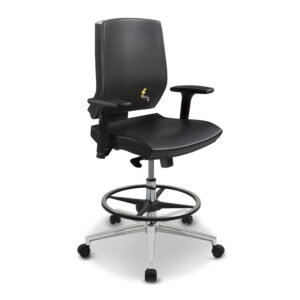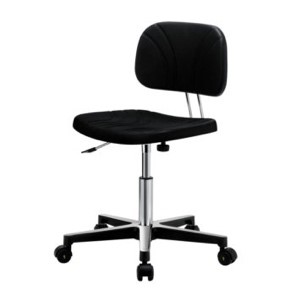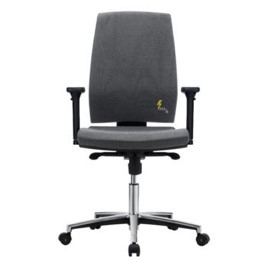ESD (Electro Static Discharge) is the phenomenon of electrostatic discharge which due to electrostatically charged objects or people that release electrons. Electrostatic discharge can cause considerable damage, especially in electronic components.
To protect components such as electronic or microelectronic it is essential to use an ESD protection, in this way during their production, processing and shipping they will not be damaged.
For this reason, ESD workstations are subject to special requirements both as regards the tools that are used and as regards the objects that are part of the set-up.
Particular attention must be paid to chairs which must also comply with ESD requirements in order to guarantee the reliability of ESD protection throughout the workplace. In fact, every traditional chair is a typical source of electric charges since the movement (on wheels) of the chair on the floor and also the simple movement of the person sitting on the chair can cause high electrostatic charges.
But what should the perfect antistatic chair be like?
The materials of which the Grendene ESD chairs are usually upholstered in are of 3 types:
- Faux leather, a highly technical soft material, completely washable and sanitizable. In addition to these characteristics, they are distinguished by their high electrical conductivity and fire resistance.

- Integral polyurethane: it is resistant and water-repellent, the seats are designed according to hygiene and health standards and can be inserted in contexts and environments such as clean rooms.

-
Antistatic fabric, a special certified ESD fabric capable of both preventing and dissipating electrostatic charges in an optimal way but, at the same time, also being sanitizable and fireproof
Not to be underestimated, is the simple design of the Gref chairs and the shape of the seat that facilitate the user in moving the chair and allowing him to grasp it quickly and easily in case of need.
Gref products are optimal to use in the hospital sector, in laboratories and in the industrial sector in general. Come and discover the Gref series.

